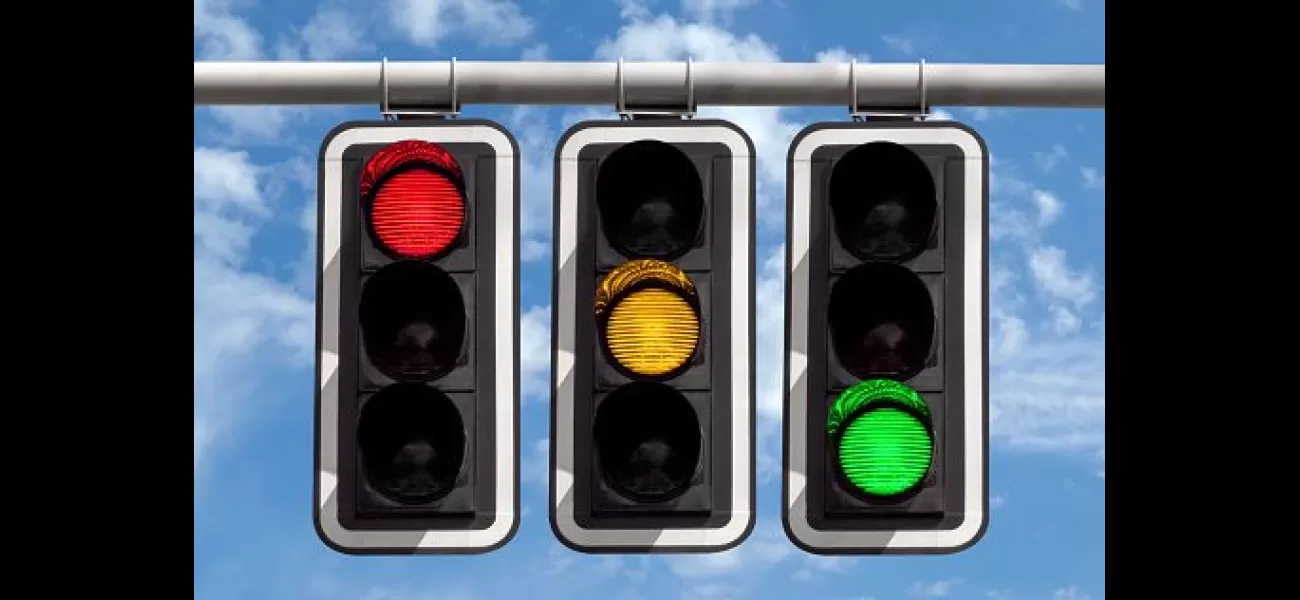Possible paraphrase: New color may be added to traffic lights.
It's a big shift.
August 11th 2024.

It's hard to imagine a world without the familiar red, amber, and green lights of traffic signals. For over a century, these lights have been guiding vehicles and pedestrians on roads all over the world. But what if I told you that one day, these lights might have a fourth color added to them? That's right, scientists are proposing the addition of a white light to help traffic flow around driverless vehicles.
The concept of autonomous vehicles is still relatively new, with no fully driverless cars on the road just yet. However, companies like Waymo in California and Arizona are making strides, achieving SAE4 out of five levels of autonomy. We're also seeing more and more self-driving cars, such as Teslas, becoming popular. While these vehicles are not yet allowed on UK roads, trials are underway and they could be permitted as early as 2026 under the Automated Vehicles Act.
This means that in the near future, there will be a mix of human-driven cars and driverless vehicles sharing the roads. To help make this transition smoother, a team of engineers at North Carolina State University has come up with a brilliant idea - a 'white light' system at traffic signals. This light will not only help self-driving cars with traffic flow, but also allow human drivers to understand what's going on.
According to Dr. Ali Hajbabaie, the lead researcher on the project, the idea is to tap into the computing power of autonomous vehicles to figure out their locations and movements. "The white phase concept incorporates a new traffic signal, so that human drivers know what they are supposed to do," he explains. "Red lights will still mean stop. Green lights will still mean go. And white lights will tell human drivers to simply follow the car in front of them."
But this new system will only be activated when there are enough autonomous vehicles on the road. Dr. Hajbabaie and his team have created computer simulations to visualize how the white light system would work. The concept involves wireless communication between self-driving cars and the traffic signal control computers. Once enough AVs approach an intersection, the white light will be activated.
For human drivers, this light will indicate that the AVs are coordinating their movements to efficiently move through the intersection. Non-automated vehicles would simply need to follow the car in front of them. However, for the majority of the time, when there aren't enough AVs on the road, the traditional red, yellow, and green lights will still be used.
But this system doesn't just benefit drivers - it also takes pedestrians into account. The researchers found that the white light concept improves traffic efficiency for both vehicles and pedestrians. It's a win-win situation for all road users.
Of course, traffic lights have a long history that precedes the advent of autonomous vehicles. The first traffic lights were installed over 150 years ago, outside the Houses of Parliament in London. These were operated by gas lights and controlled by a police constable. Unfortunately, a few weeks later, the gas lines exploded.
Electric traffic lights were first introduced in Ohio in 1914, and the three-color system that we're familiar with today was first used in Detroit in 1919. In the UK, the first manually operated three-color traffic lights appeared in Piccadilly in 1926, followed by automatic traffic lights in Wolverhampton in 1927.
Dr. Hajbabaie believes that implementing the white light system will have a significant impact on travel time, fuel efficiency, and safety for all road users. "If we see almost universal adoption of AVs in the future, our models suggest that delays at intersections would decrease by more than 25%," he says. "Even with a lower percentage of wirelessly connected AVs on the road, there would still be meaningful improvements in traffic time." It's an exciting prospect that could change the way we navigate city streets in the years to come.
The concept of autonomous vehicles is still relatively new, with no fully driverless cars on the road just yet. However, companies like Waymo in California and Arizona are making strides, achieving SAE4 out of five levels of autonomy. We're also seeing more and more self-driving cars, such as Teslas, becoming popular. While these vehicles are not yet allowed on UK roads, trials are underway and they could be permitted as early as 2026 under the Automated Vehicles Act.
This means that in the near future, there will be a mix of human-driven cars and driverless vehicles sharing the roads. To help make this transition smoother, a team of engineers at North Carolina State University has come up with a brilliant idea - a 'white light' system at traffic signals. This light will not only help self-driving cars with traffic flow, but also allow human drivers to understand what's going on.
According to Dr. Ali Hajbabaie, the lead researcher on the project, the idea is to tap into the computing power of autonomous vehicles to figure out their locations and movements. "The white phase concept incorporates a new traffic signal, so that human drivers know what they are supposed to do," he explains. "Red lights will still mean stop. Green lights will still mean go. And white lights will tell human drivers to simply follow the car in front of them."
But this new system will only be activated when there are enough autonomous vehicles on the road. Dr. Hajbabaie and his team have created computer simulations to visualize how the white light system would work. The concept involves wireless communication between self-driving cars and the traffic signal control computers. Once enough AVs approach an intersection, the white light will be activated.
For human drivers, this light will indicate that the AVs are coordinating their movements to efficiently move through the intersection. Non-automated vehicles would simply need to follow the car in front of them. However, for the majority of the time, when there aren't enough AVs on the road, the traditional red, yellow, and green lights will still be used.
But this system doesn't just benefit drivers - it also takes pedestrians into account. The researchers found that the white light concept improves traffic efficiency for both vehicles and pedestrians. It's a win-win situation for all road users.
Of course, traffic lights have a long history that precedes the advent of autonomous vehicles. The first traffic lights were installed over 150 years ago, outside the Houses of Parliament in London. These were operated by gas lights and controlled by a police constable. Unfortunately, a few weeks later, the gas lines exploded.
Electric traffic lights were first introduced in Ohio in 1914, and the three-color system that we're familiar with today was first used in Detroit in 1919. In the UK, the first manually operated three-color traffic lights appeared in Piccadilly in 1926, followed by automatic traffic lights in Wolverhampton in 1927.
Dr. Hajbabaie believes that implementing the white light system will have a significant impact on travel time, fuel efficiency, and safety for all road users. "If we see almost universal adoption of AVs in the future, our models suggest that delays at intersections would decrease by more than 25%," he says. "Even with a lower percentage of wirelessly connected AVs on the road, there would still be meaningful improvements in traffic time." It's an exciting prospect that could change the way we navigate city streets in the years to come.
[This article has been trending online recently and has been generated with AI. Your feed is customized.]
[Generative AI is experimental.]
0
0
Submit Comment





